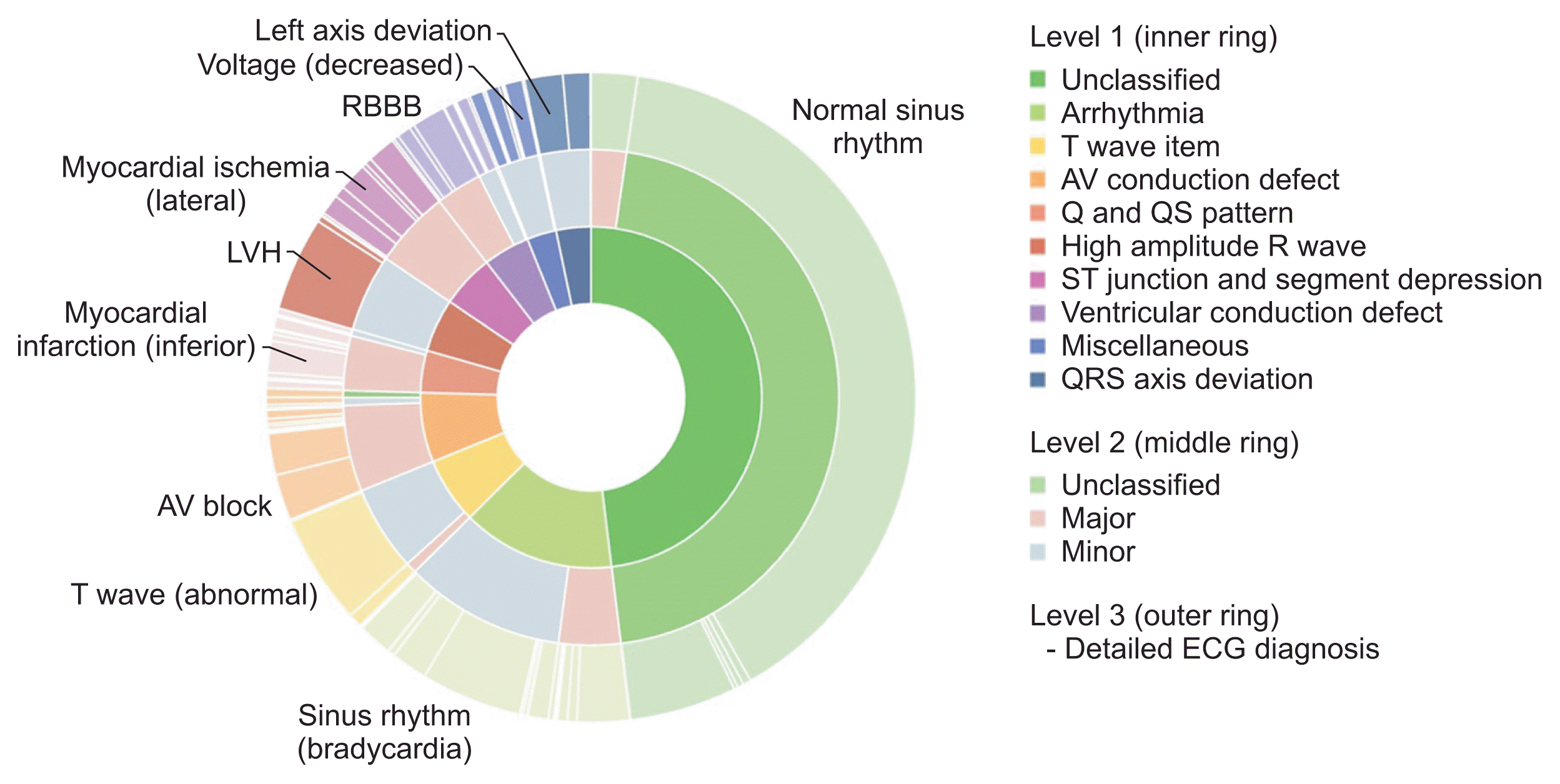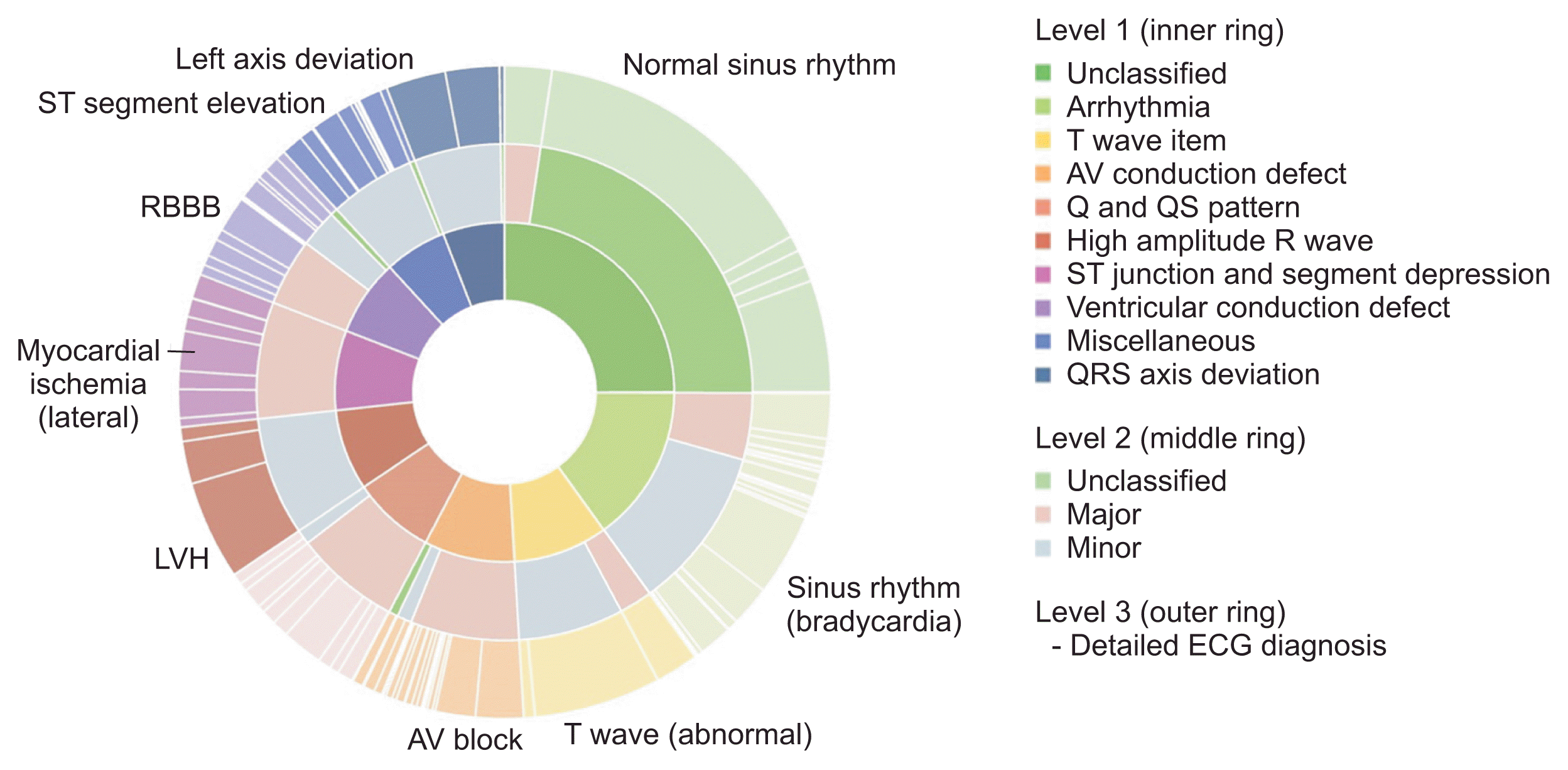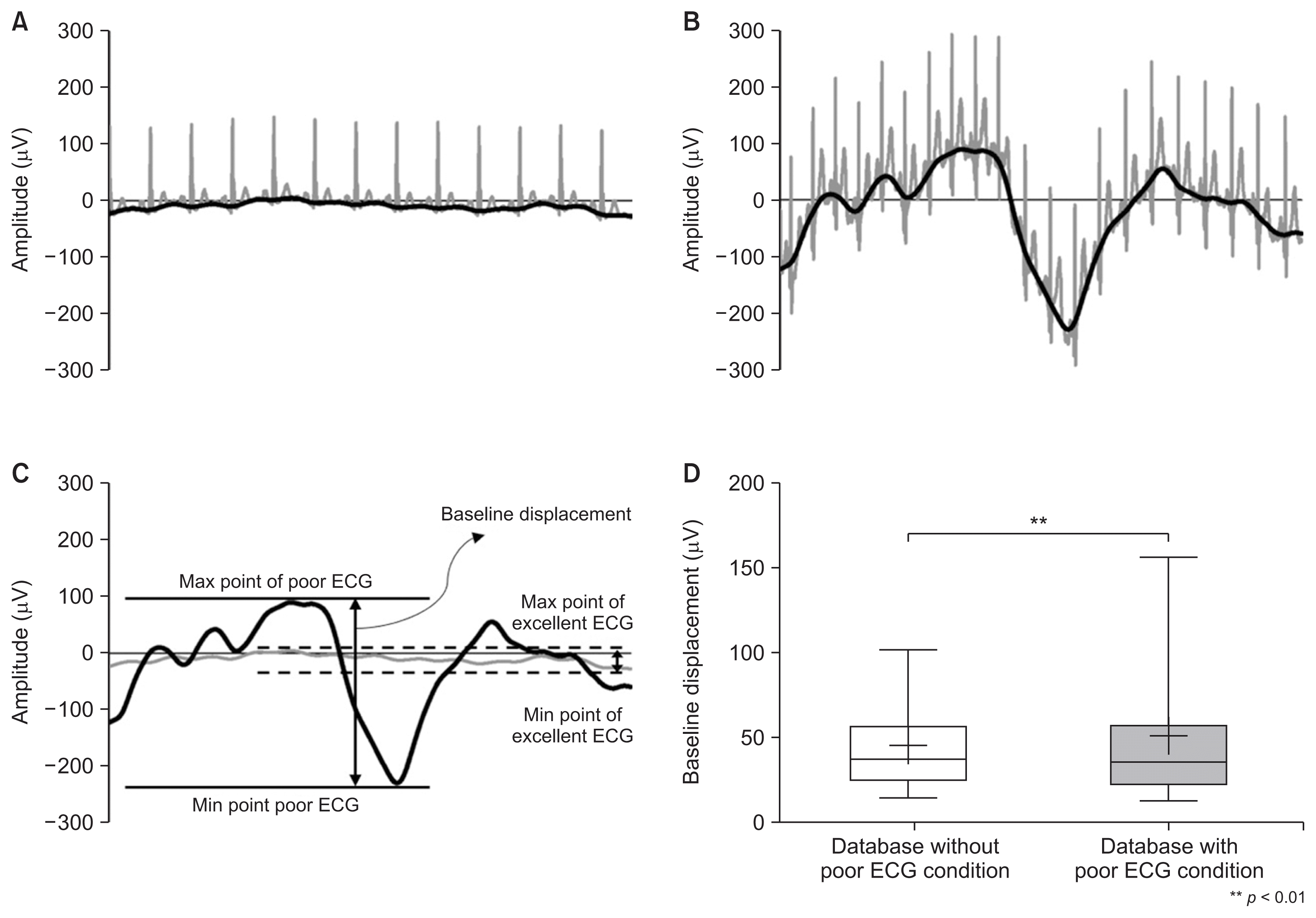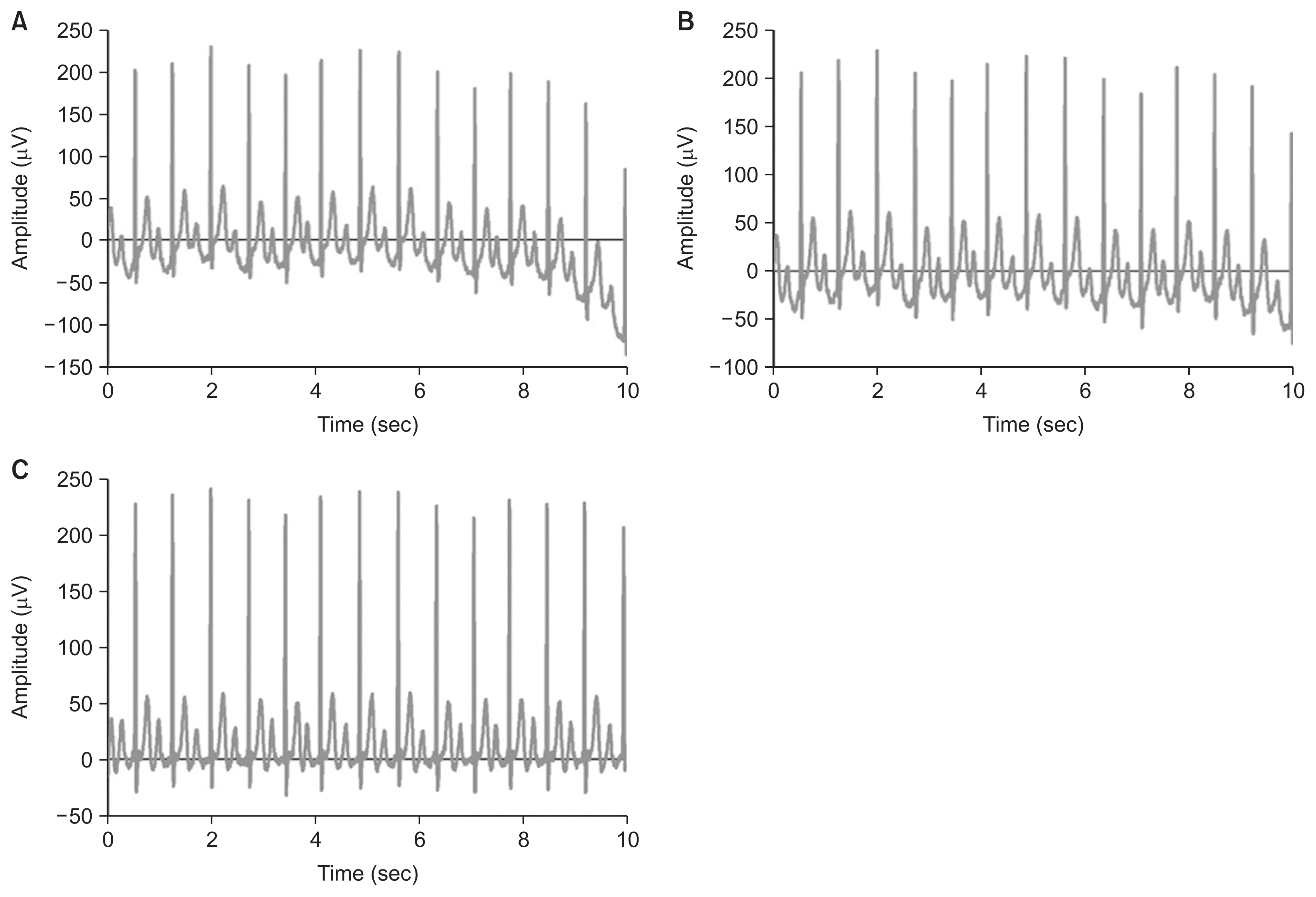1. Maron BJ, Friedman RA, Kligfield P, Levine BD, Viskin S, Chaitman BR, et al. Assessment of the 12-lead ECG as a screening test for detection of cardiovascular disease in healthy general populations of young people (12–25 years of age): a scientific statement from the American Heart Association and the American College of Cardiology. Circulation. 2014; 130(15):1303–34.
https://doi.org/10.1161/CIR.0000000000000025.

2. Hao P, Gao X, Li Z, Zhang J, Wu F, Bai C. Multi-branch fusion network for Myocardial infarction screening from 12-lead ECG images. Comput Methods Programs Biomed. 2020; 184:105286.
https://doi.org/10.1016/j.cmpb.2019.105286.

3. Rajkumar A, Ganesan M, Lavanya R. Arrhythmia classification on ECG using deep learning. In : Proceedings of 2019 5th International Conference on advanced Computing & Communication Systems (ICACCS); 2019 Mar 15–16; Coimbatore, India. p. 365–9.
https://doi.org/10.1109/ICACCS.2019.8728362.

6. Goldberger AL, Amaral LAN, Glass L, Hausdorff JM, Ivanov PCh, Mark RG, Mietus JE, Moody GB, Peng C-K, Stanley HE. PhysioBank, PhysioToolkit, and PhysioNet: components of a new research resource for complex physiologic signals. Circulation. 2000. 101:e215–e220.
http://circ.ahajournals.org/cgi/content/full/101/23/e215.
7. Taddei A, Distante G, Emdin M, Pisani P, Moody GB, Zeelenberg C, et al. The European ST-T database: standard for evaluating systems for the analysis of ST-T changes in ambulatory electrocardiography. Eur Heart J. 1992; 13(9):1164–72.
https://doi.org/10.1093/oxfordjournals.eurheartj.a060332.

8. Jager F, Taddei A, Moody GB, Emdin M, Antolic G, Dorn R, et al. Long-term ST database: a reference for the development and evaluation of automated ischaemia detectors and for the study of the dynamics of myocardial ischaemia. Med Biol Eng Comput. 2003; 41(2):172–82.
https://doi.org/10.1007/BF02344885.

10. Moody GB, Muldrow W, Mark RG. A noise stress test for arrhythmia detectors. Comput Cardiol. 1984; 11(3):381–4.
14. Moody GB. The PhysioNet/Computers in Cardiology challenge 2008: T-wave alternans. In : Proceedings of 2008 Computers in Cardiology; 2008 Sep 14–17; Bologna, Italy. p. 505–8.
https://doi.org/10.1109/CIC.2008.4749089.

15. Kalyakulina AI, Yusipov II, Moskalenko VA, Nikolskiy AV, Kosonogov KA, Osipov GV, et al. LUDB: a new open-access validation tool for electrocardiogram delineation algorithms. IEEE Access. 2020; 8:186181–90.
https://doi.org/10.1109/ACCESS.2020.3029211.

16. Zheng J, Zhang J, Danioko S, Yao H, Guo H, Rakovski C. A 12-lead electrocardiogram database for arrhythmia research covering more than 10,000 patients. Sci Data. 2020; 7(1):48.
https://doi.org/10.1038/s41597-020-0386-x.

17. Wagner P, Strodthoff N, Bousseljot RD, Kreiseler D, Lunze FI, Samek W, et al. PTB-XL, a large publicly available electrocardiography dataset. Sci Data. 2020; 7(1):154.
https://doi.org/10.1038/s41597-020-0495-6.

18. Donnelly K. SNOMED-CT: the advanced terminology and coding system for eHealth. Stud Health Technol Inform. 2006; 121:279–90.
20. Prineas RJ, Crow RS, Zhang ZM. The Minnesota code manual of electrocardiographic findings. New York (NY): Springer Science & Business Media;2009.
21. Willems JL, Abreu-Lima C, Arnaud P, van Bemmel JH, Brohet C, Degani R, et al. The diagnostic performance of computer programs for the interpretation of electrocardiograms. N Engl J Med. 1991; 325(25):1767–73.
https://doi.org/10.1056/NEJM199112193252503.

23. Makadia R, Ryan PB. Transforming the premier perspective hospital database into the Observational Medical Outcomes Partnership (OMOP) common data model. EGEMS (Wash DC). 2014; 2(1):1110.
https://doi.org/10.13063/2327-9214.1110.

25. Sohn J, Yang S, Lee J, Ku Y, Kim HC. Reconstruction of 12-lead electrocardiogram from a three-lead patch-type device using a LSTM network. Sensors (Basel). 2020; 20(11):3278.
https://doi.org/10.3390/s20113278.

27. Baek SJ, Park A, Ahn YJ, Choo J. Baseline correction using asymmetrically reweighted penalized least squares smoothing. Analyst. 2015; 140(1):250–7.
https://doi.org/10.1039/c4an01061b.

30. Yoo H, Chung SH, Lee C-N, Joo HJ. Deep Learning Algorithm of 12-Lead Electrocardiogram for Parkinson Disease Screening. J Parkinsons Dis. 2023. Preprint. 1–12.
https://doi.org/10.3233/JPD-223549.








 PDF
PDF Citation
Citation Print
Print




 XML Download
XML Download